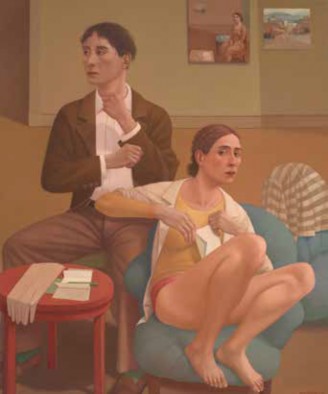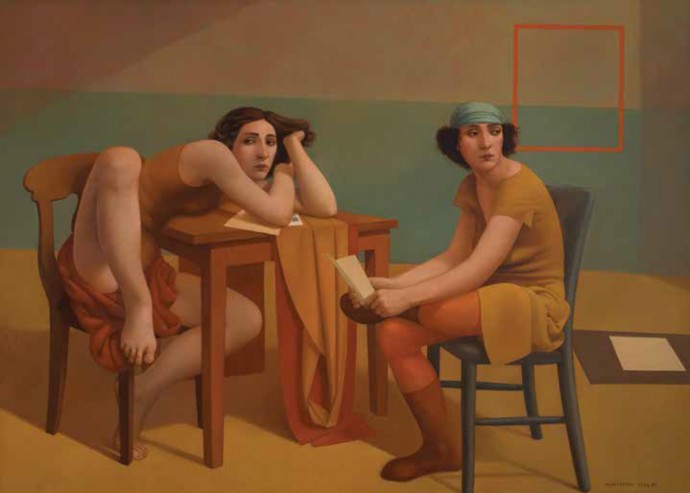“Alan Feltus: An Air of Stillness” is on view at Winfield Gallery (Carmel, California) through December 8, 2019.
From an Essay on Alan Feltus, by Helaine Glick:
A captivating air of stillness underlies all of Alan Feltus’s figurative tableaus. His self-possessed females and their male counterparts inhabit a private realm suspended in time and space, and nothing out of context interferes to break the spell. With his rich but unobtrusive brushstrokes, precise palette of tempered Mediterranean color, and uncannily perceptive eye, Feltus gives expression to rarified and faintly voyeuristic scenarios suffused with longing, expectation, boredom, anticipation, uncertainty, and regret. Both hypnotic and mysterious, his paintings pose many questions but reveal few answers.

Feltus came of age in mid-twentieth century New York City. Raised by a beautiful but troubled bohemian mother, he was often left to his own devices. He attended alternative schools and spent one high school year in Rome with her, but it was his association with her artist friends—some of whom became mentors—that inspired him and helped him to thrive. He spent hours in New York’s Metropolitan Museum of Art and the Museum of Modern Art, where he developed a keen awareness of the scope of art, and of his own tastes and preferences. Henri Rousseau’s “The Sleeping Gypsy” was a favorite, as were the haunting paintings of French-Polish artist Balthus. By the early 1960s, Feltus landed in art school, eventually earning his master of fine arts degree in painting at Yale University. While teaching at the School of the Dayton Art Institute in Ohio, he was awarded the Rome Prize Fellowship (Prix de Rome), which meant a two-year stay at the American Academy in Rome.
Living again in Rome was extremely fruitful for Feltus. He had no constraints or requirements to fulfill, and was free to experiment in a beautiful studio and roam the city’s galleries and museums. During this period he discovered a work that would become central to his artistic life—the painting “Susanna,” by Italian artist Felice Casorati, installed at the Gallery of Modern and Contemporary Art. A casually intimate scene of a nude woman seated next to to a fully clothed man in a closely defined interior space, it struck him like a bolt of lightning. The painting seemed to him to have “everything I could want my own paintings to have.” He considered it the perfect composition: two figures, select pieces of furniture, and a few scattered papers. It had the “quiet, contemplative character” that he craved. This work solidified Feltus’s commitment to narrative figure painting, and endorsed the kind of work his nature directed him towards.
Returning to the United States, Feltus took up a full-time teaching position at the American University in Washington, DC, and began to regularly exhibit his work at the Forum Gallery in New York City. He married artist Lani Irwin, and settled on a farm in Maryland, to teach and paint. But the pull of his Italian experiences and a life dedicated solely to art led him to conclude his teaching career of twelve years, and with his family, relocate to the historic town of Assisi in Italy.

Sign up to receive Fine Art Today, the free weekly e-newsletter from
Fine Art Connoisseur magazine.









Excelente trabajo.